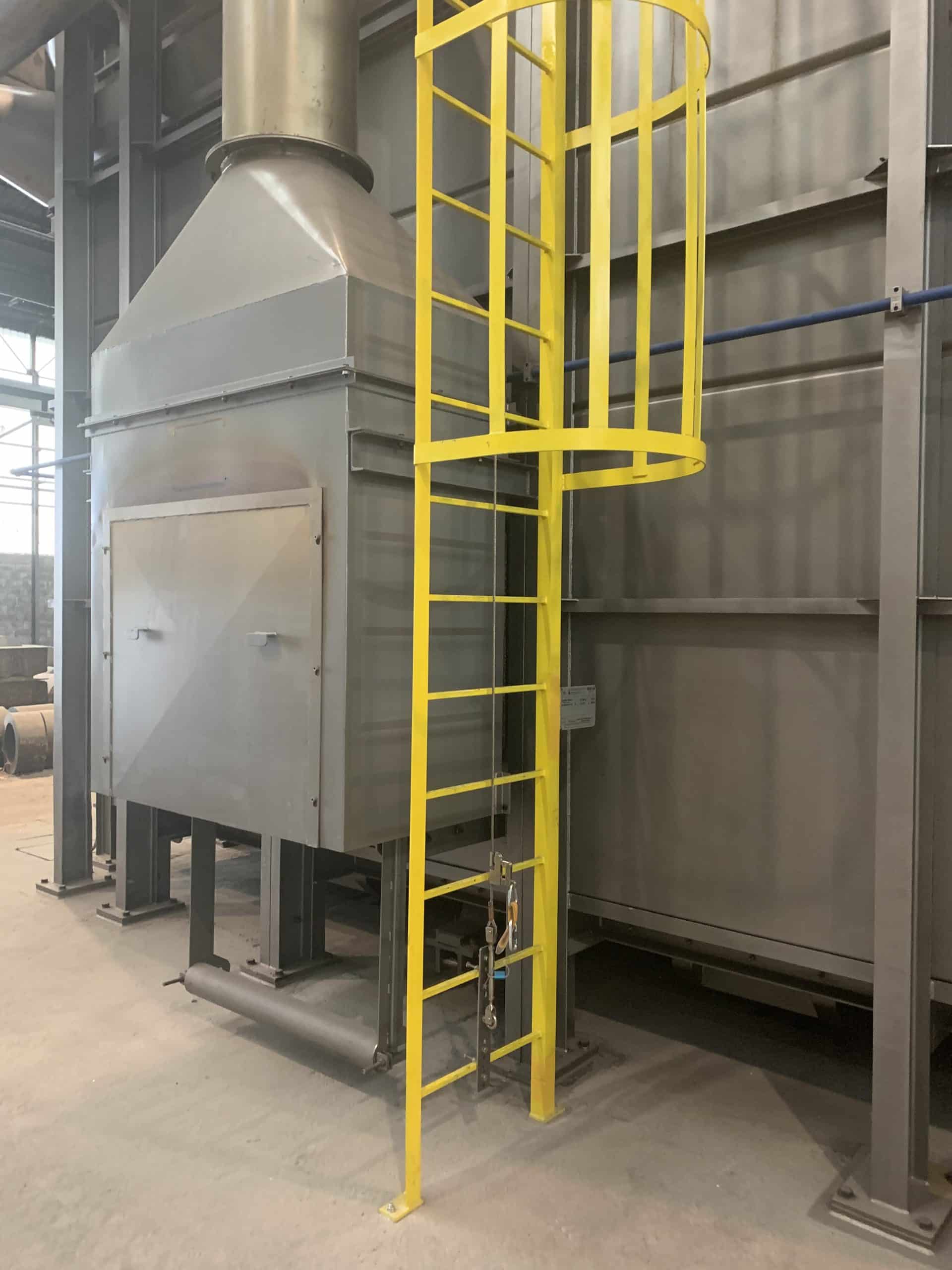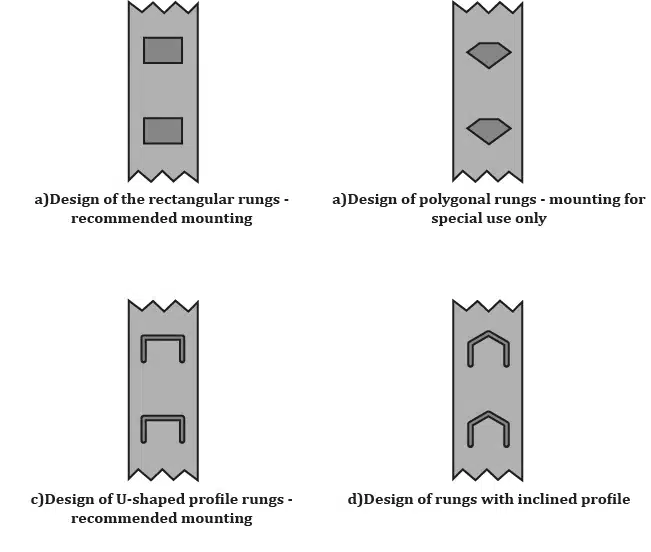Last edit: 31/01/2025

The Standard EN ISO 14122-4 was published in Italy on October 2016, replaces the previous EN ISO 14122-4 of 2010 and is not applicable to machinery manufactured before the date of its publication.
This part of ISO 14122 gives requirements for fixed ladders which are a part of a stationary machine, and to the non-powered adjustable parts (e.g. foldable, slidable) and movable parts of fixed ladder systems..
The new standard, thanks to the use of images, allows to have a clearer idea of what are the requirements to be observed.
Physical characteristics of the ladder and protection devices
The standard details the test to be performed, both with one or two stiles.
The test weights and the application points are established for the various elements of the ladder (rungs and stiles) and for any protection devices (safety cages or guard-rails).
The geometric features (design and construction) of all the elements that can form the ladder system, from rungs to safety cages, are detailed. This section specifies that the fall protection devices to be applied to the arrival area are independent of any other protection device applied to the ladder. Therefore, it is not possible to avoid other fall protection devices just because, for example, it is expected to use the fall arrester along the ladder.

Marking of Ladder systems with fall arrester
At least the following shall be permanently marked at point of entry and exit to the ladder system:
- the Manufacturer;
- the Year of manufacture;
- the date of commissioning;
- a reference on standard for fall protection;
- a reference on standard of full body harness;
- the type of guided type fall arrester;
- the type of fall protection device;
- the notice: "Use of personal protective equipment is mandatory".
